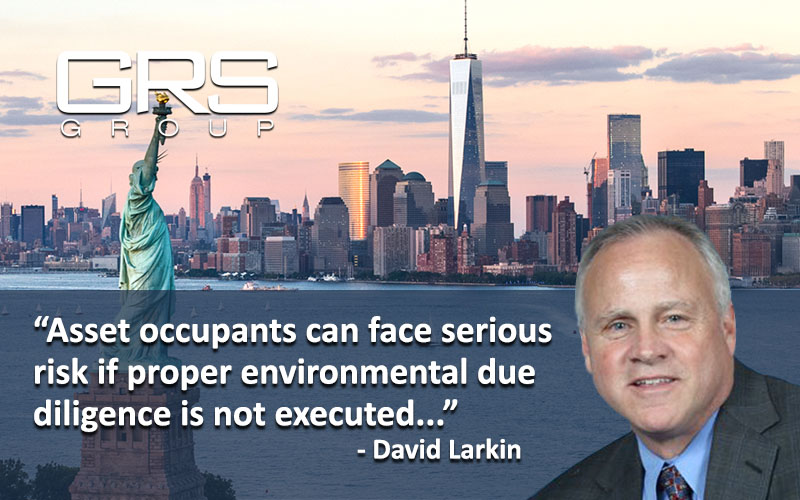
David Larkin
Director, GRS Title
(973) 362-4539
dlarkin@fv2.d32.myftpupload.com
The longer a firm waits to complete its environmental due diligence on a transaction or development project, the more problems the company could face during the life of the deal. That was the overriding message at a recent CREW New York meeting I attended called Environmental Challenges in NYC Commercial Real Estate.
The Hudson River Park in its current form, and the commercial and residential developments surrounding it, including the estimated $25-billion Hudson River Yards multi-use project underway, were far from their present reality about 15 years ago. Simply put, the area along the Hudson in Manhattan was a messy industrial wasteland, and it took years of environmental due diligence and community involvement to make the area the vibrant place it is today, setting it up for major future development.
A panel at the CREW luncheon pointed out that areas near waterways are attractive for obvious reasons, but in the past, these locations were mostly Industrial sites with many possible environmental risks. Now firms know those risks and how to mitigate them prior to doing a transaction or development. They can either cap the waste material or dump it in a designated area. Obviously, these measures are costly, but panelists mentioned the use of the EPA’s Brownfields Tax Incentive and other abatement programs, such as the Brownfield redevelopment tax credit in New York State, which be as high as $35 million, to cover those expenses.
Plus, more communities are interested in getting on board with redevelopments of blighted areas. After all, why oppose developers that want to beautify, and safely remediate areas that make for “cool properties?” If rezoning is an issue, CCIM suggests some ways to navigate that process.
Identifying environmental risks early is crucial for several reasons. Before making a large transaction, it’s obviously important to know the environmental status of what you’re buying so that mitigation costs can be taken in consideration when assessing a building’s bottom-line value. That’s considered a first-party risk.
Third-party risks are consequences that asset occupants can face if proper environmental due diligence isn’t executed. An extreme example is the presence of Legionella bacteria, which can cause Legionnaire’s disease, in a facility’s pipes. Instances of this in multifamily properties have caused illness, and death in some cases. Risks in the water system are now more prevalent in aging structures, and the science of preventing these environmental issues needs to be evaluated and indemnified.
Environmental insurance can also play a favorable role in cleaning up brownfields, some CREW speakers pointed out. This article on environmental coverage by a Pillsbury Winthrop Shaw Pittman attorney says that there are several risks to doing work on these sites, such as: finding unknown contamination, being liable for natural-resources damage, releasing contaminants during clean up, and the higher costs and significant amount of time associated with the process. “While many excess and umbrella policies contain pollution exclusions, which can leave large gaps in coverage, environmental insurance can play a pivotal role in real estate development by limiting risks and protecting a developer’s project from unexpected costs,” attorney Charisse Alexander explains.
Previous to getting involved in a transaction or development, do your due diligence and make sure you have appropriate insurance for the endeavor your firm is undertaking. Lenders require it, and the process is crucial for your potential asset and its future tenants.
About GRS Group:
GRS Group is a leading provider of commercial real estate (“CRE”) services worldwide. With offices across the United States, Europe, and affiliates around the globe, GRS Group provides local market knowledge with a global perspective for institutional real estate investors, occupiers and lenders worldwide. The GRS Group team has evaluated and advised on over $1 trillion in CRE transactions.

